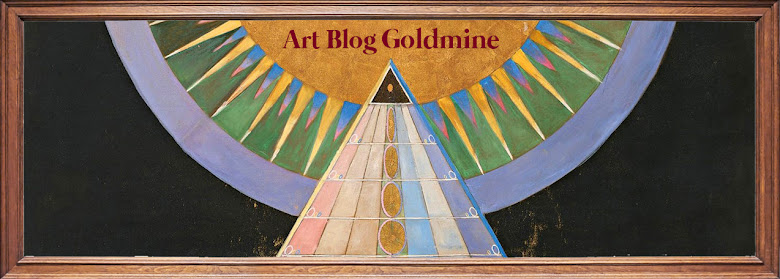Just as European classical masterpieces are in museums of Europe, Australian classical masterpieces are in Art Gallery of New South Wales, making them a must-see for visitors. Australian classical paintings portray scenes of Australia and Europe by following Greek and Roman ideas and techniques.
After European settlement, European artists migrated to Australia and continued their artistic practice by painting various subjects and passing their skills to the next generations of European painters in Australia.
Active Australian classical artists had diverse geographical backgrounds. They grew up and had art education either in Europe or Australia.
Art Gallery NSW has a large collection of significant Australian masterpieces painted by classical artists. Among them, I carefully selected works that evidently show key characteristics of Australian classical art. Selected masterpieces show Australian nature, the arduous lives of the Australian working class, the sumptuous lives of privileged Europeans, and voluptuous feminine beauty.
Selected Works
- Nature of Sydney and Australia
- Arduous Lives of Working Class in Australia
- Sumptuous lives of High Society in Europe
- Voluptuous Feminine Beauty
Nature of Australia
Australia is renowned for its scenic and unpolluted nature. It ranks as one of the best in the world. Captivated by the charms of Australia's nature, artists passionately painted the land and sea of the beautiful land. Portrayed nature shows Australians' common sense of the nature of Australia. The nature is too immense and sublime that it is beyond human grasp and imagination. Thus, people are minuscule compared to mighty nature. Accordingly, Australian classical art portrays nature as vast and people and traces of civilization as small. |
| Tom Roberts, Holiday sketch at Coogee, 1888, Oil on canvas |
 |
| Sydney Long, Pan, 1898, Oil on canvas |
The art-nouveau and Symbolist masterpiece shows an Arcadian pagan god blowing his pipe while a group of naked people dancing along to his music and lying down in a geometrical forest. The decorative and art nouveau-inspired trees symbolize the sensuous mood of the erotic spectacle. Naked people represent bucolic liberty and erotic frisson.
 |
| Arthur Streeton, Fire's on, 1891, Oil on canvas |
The painting captures a critical moment during the construction of a railway line across the Blue Mountains, west of Sydney: the death of a railway worker in an explosion. 'Fire's on' was the warning call before the blast, as the gang dynamited the Lapstone Tunnel through the hillside. The human drama of the painting, however, is overshadowed by the immensity of the landscape itself. Arthur Streeton's visions of the landscape have defined an image of Australian nature.
Arduous Lives of the Working Class in Australia
The divine land of Australia gives life and breeds myriad kinds of flora and fauna. the fertile land is blessed with a wide variety of climates from the warm tropical north to the cooler southern region. Accordingly, there's little that the land can't grow or produce. The majority of European descendants' duty was to process the resources from nature into consumable commodities. Australian classical artists, informed about the importance of labor, captured various angles of the lives of the Australian working class. |
| Oswald Brierly, Whalers off Twofold Bay, NSW, 1867, Watercolor |
The masterpiece features a commercial whale slaughter operation at Twofold Bay, on the far south coast of New South Wales.
 |
| Tom Roberts, The Golden Fleece, 1894, Oil on canvas |
 |
| Henry Herbert La Thangue, Cider apples, 1899, Oil on canvas |
 |
| Antonio Dattilo-Rubbo, The strike's aftermath, 1913, Oil on canvas |
Sumptuous Lives of Privileged Europeans
In the early 20th century, European artists active in Australia had affluent family backgrounds, as becoming an artist demanded high financial costs for education and art material. So since childhood, the artists were well acquainted with privileged and materialistic life. They traveled to various countries in Europe extensively. After their art education in Melbourne and Sydney, they traveled to Europe and painted admired lives of wealthy Europeans, scenes that they are familiar with. Consequently, some artists left masterpieces to be preserved as timeless images of European high life. They received recognition in European art institutions including Paris Salon and Royal Academy, London. |
| E Phillips Fox, The ferry, c1910-1911, Oil on canvas |
 |
| Rupert Bunny, A summer morning, 1908, Oil on canvas |
This greatly admired painting portrays the life of privileged women in lacy dresses. The artist's wife, kittenish herself, plays with a lapful of cats. Her companion accepts a basin of milk from a meaningfully shadowed maid.
 |
| George Lambert, Holiday in Essex, 1910, Oil on canvas |
Voluptuous Feminine Beauty
Rich in natural resources, colonized Australia eventually became wealthy. The abundant life of materialistic pleasure in Australia greatly influenced Australian classical artists. As a result, they choose women of voluptuous beauty as subjects to represent bountiful life in Australia. Plump depiction of fabric and flesh is a common characteristic of Australian classical painting featuring feminine beauty. |
| Charles Landelle, Ismenie, nymph of Diana, 1878, Oil on canvas |
 |
| Violet Teague, Dian dreams, 1909, Oil on canvas |
Thank you for finish reading the article. It is the second article of classical art chapter in the comprehensive study on Australian Art. The study is divided into three chapters according to era: classical, modern and contemporary. To view the complete list of the articles within the study, please direct to the linked article.
To support Art Blog Goldmine:
- Browse and read articles of similar topics in Art History: Classical
- Subscribe to the blog via RSS feed
- Follow Twitter for must-know art history facts and key art world news
- Recommend the blog to art enthusiast communities






No comments:
Post a Comment